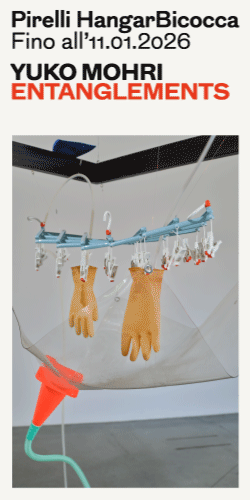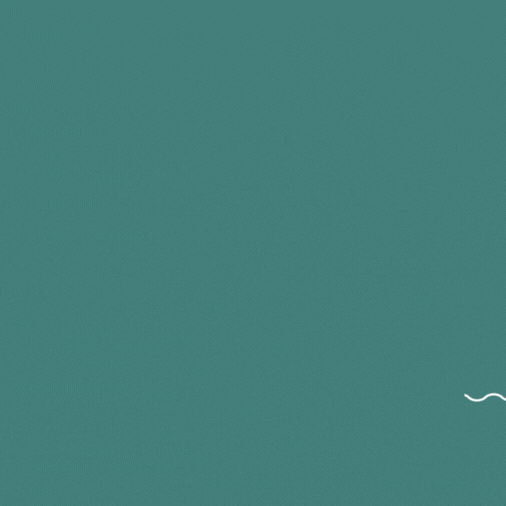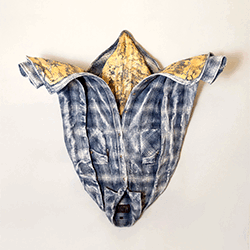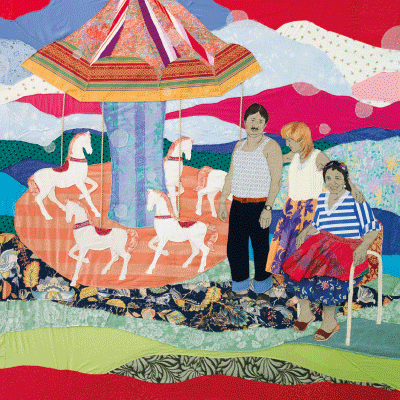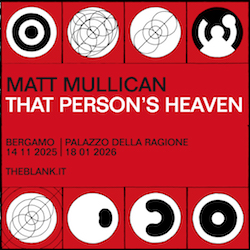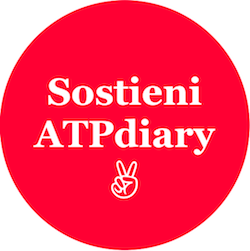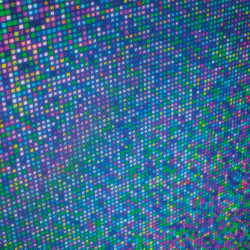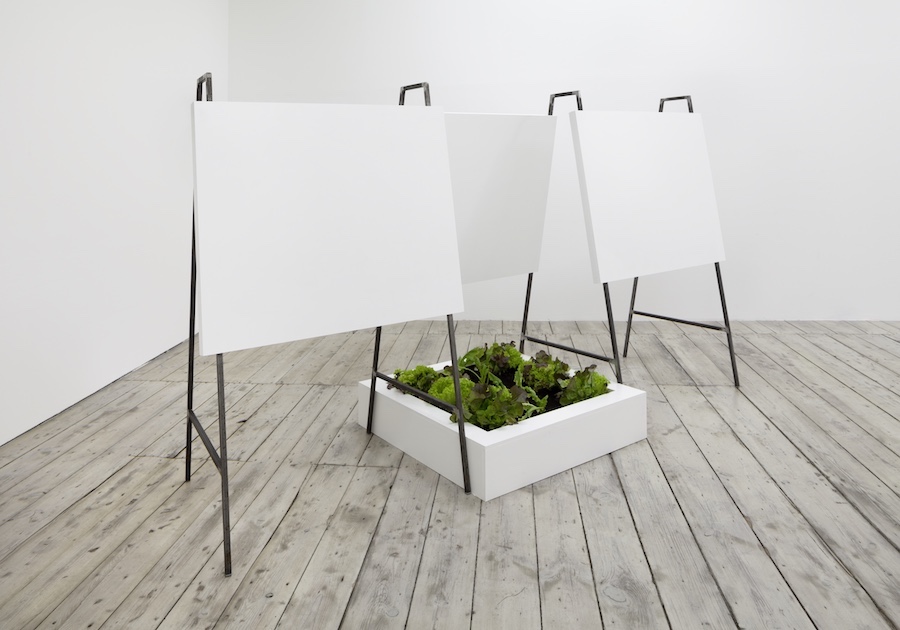
Limits of Responsibility is a body of works focusing on the cultivation of vegetables amidst the tumultuous events in Ukraine in 2014 and exploring the conditions of visual representation. A series of the artist’s own photos projected onto the wall document how protestors inhabited Independence Square in Kyiv until they were driven away in summer 2014. Amongst the remains of monuments, rubble, and improvised tent encampments, is a small garden of cabbage, onions and lettuce planted by protestors in the contested ground. This produce contributes to the sustenance of the activists, and roots their claim deep into the soil. An object, consisting of display boards flanking a square patch planted with lettuce and herbs, was constructed according to a 1979 Soviet manual on displaying agricultural achievements (also on view). Here the displays are intentionally left blank, isolating the “means of visual agitation and propaganda” from any ideological content. The work exposes the limits of the positions we assume as observers and participants.
Space4235 nasce come estensione di un grande studio condiviso, attualmente composto da sei persone attivamente coinvolte nello spazio. 4235 spazio espositivo nasce dalla necessità di creare un intenso interscambio creativo di alto livello in una città penalizzata, soprattutto negli ultimi anni, da una posizione decentrata, infatti è attualmente l’unico spazio indipendente coordinato da artisti attivo a Genova.
Il concept che guida la programmazione nasce dalla stretta e personale relazione con gli artisti invitati ad esporre nel nostro spazio, cercando di creare un delicato equilibrio tra gli eventi internazionali e quelli locali. Gli interventi artistici nascono spesso in stretta sintonia con lo spazio espositivo e da scelte formali su scala ridotta.
Space 4235 is an independent studio & artist-run space. 4235 consists of four artists studios, a library with an extensive and accessible archive of publications and artist’s books. 4235 runs a program with international artists who work within a variety of fields, theoretical/material explorations and small-scale works.
—
Nikita Kadan —
The work of Nikita Kadan combines an attempt to represent the loss of a coherent historical narrative and an effort to reestablish its role in society. The attentive alignment of his practice to critical socio-political issues provides us with an insight into the political experience of the totalizing “now” characterizing the current situation in Ukraine. Emerging from a tradition of collective activism within the R.E.P. group, Kadan’s individual practice has elaborated a body of works encompassing the notions of politics of memory and the relations between the narratives of modernity and the reality of capitalist society.
A particular sensibility for the status of history and the ability to visualize the internal mechanisms that regulate the dynamics between forgetfulness and memory pervade his works. In this panorama of a staggering eternal present, the outbreak of the 2013-14 protests in Ukraine, as well as the recent changes that have resulted in major geopolitical repartitions, seem to demand a coming back to history. The return to history is also a return to narrative as a tool to connect different, apparently unrelated events. This manipulation of time may yet bring out excluded and marginalized counter-stories, neglected sources, and create a short circuit in contemporary historiographical streams.
The path toward the revival of history also implies reflection on the role of the museum. At a moment when the future of history seems to be uncertain, the museum risks being transformed into a subordinate ideological commodity. Looking at the image of the Natural History Museum destroyed by bombs in Donetsk, conjured by the installation Hold the Thought Where the Story was Interrupted, I think that the museological turn embarked on by Nikita Kadan in his latest projects refers to the museum as a victim of political chaos. At the same time as he envisions the collapse of the institution, not only as a result of the war, but also from internal weakness and inability to adapt to the turbulent reality of the post-Soviet condition, Kadan reclaims the historical museum as a conceptual frame for examining the present.
From Introduction. The Double Bind of History
by Silvia Franceschini, 2014
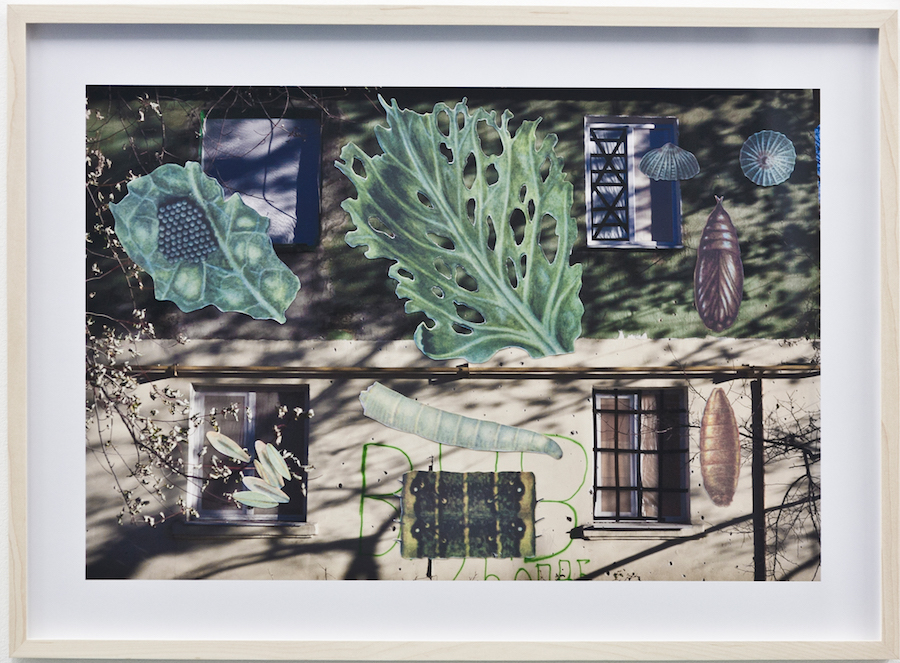
Limits of Responsibility is a body of works focusing on the cultivation of vegetables amidst the tumultuous events in Ukraine in 2014 and exploring the conditions of visual representation. A series of the artist’s own photos projected onto the wall document how protestors inhabited Independence Square in Kyiv until they were driven away in summer 2014. Amongst the remains of monuments, rubble, and improvised tent encampments, is a small garden of cabbage, onions and lettuce planted by protestors in the contested ground. This produce contributes to the sustenance of the activists, and roots their claim deep into the soil. An object, consisting of display boards flanking a square patch planted with lettuce and herbs, was constructed according to a 1979 Soviet manual on displaying agricultural achievements (also on view). Here the displays are intentionally left blank, isolating the “means of visual agitation and propaganda” from any ideological content. The work exposes the limits of the positions we assume as observers and participants.
‘Protection of plants’ collage series consists of photographs taken by the artist in Eastern Ukraine. The images show visibly damaged buildings by the recent conflicts in the area and are overlayed by illustrations of plants and vegetables cut out of old Sowjet books. The photographic style has the feel of a snapshot; it is very much about the present condition. The vegetables, carefully extracted from their constructed context, float evenly over the image and randomly obscure parts of the picture.
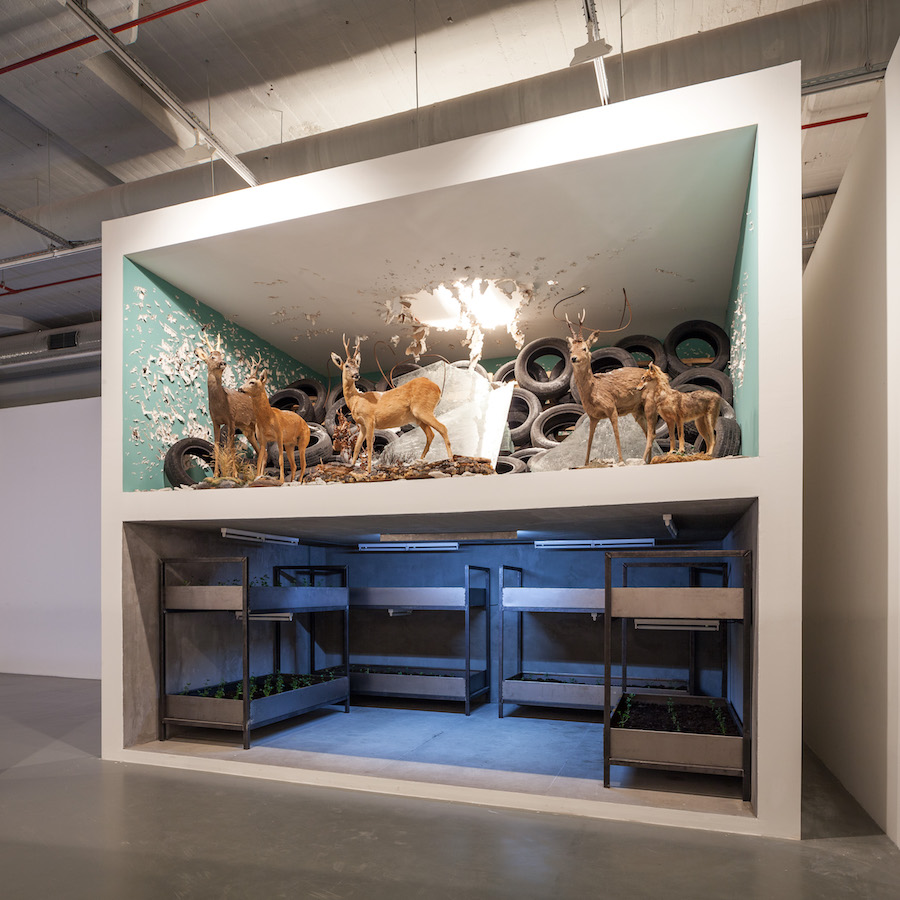
Taking his story from Donetsk Local History Museum that was decimated during the ongoing armed conflict in Eastern Ukraine, artist creates an installation reminiscent of a bomb shelter. Out of the bunk beds arranged around the perimeter of the room, celery plants have taken root and are growing upwards. The ruined museum space is reconstructed in upper part of construction. The car tires are added to the ruin transforming it to the barricade.

